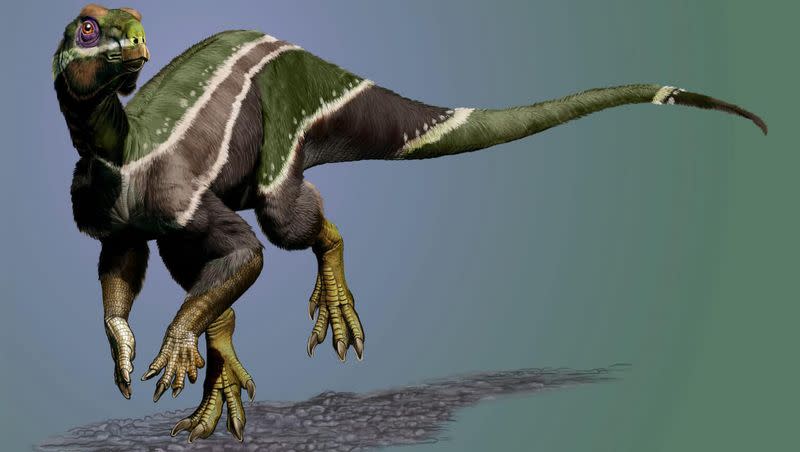New dinosaur species found in Utah helps researchers piece together Earth's history

The bones of a previously unknown plant-eating dinosaur found in central Utah nearly a decade ago may provide new clues about how the Earth's climate changed millions of years ago, paleontologists say.
Researchers say the species, named Iani smithi as a nod to Janus, the two-faced Roman god of change, was an early ornithopod during the mid-Cretaceous period about 99 million years ago. Its bones were originally dug up in an Emery County portion of the Cedar Mountain Formation in 2014, according to a study published in PLOS ONE this month.
"Finding Iani was a streak of luck. We knew something like it lived in this ecosystem because isolated teeth had been collected here and there, but we weren't expecting to stumble upon such a beautiful skeleton, especially from this time in Earth's history," said Lindsay Zanno, an associate research professor at North Carolina State University, and one of the study's authors, in a news release. "Having a nearly complete skull was invaluable for piecing the story together."
The creature was sort of a precursor to more commonly known duckbill dinosaurs, like the Parasaurolophus and Edmontosaurus. It had a jaw and teeth that helped it chew through stiff plant material, Zanno explained.
But it also lived through an interesting time in Earth's history, as the species' name hints. She explained that carbon dioxide began to build up in the Earth's atmosphere, causing the planet to warm and sea levels to rise. Many giant dinosaurs started to disappear, from giant plant-eating species to their predators.
Researchers said that finding the bones of the Iani smithi is a bit of a surprise because it's one of the few fossils found in North America from during this time. They believe the Iani smithi arrived in the middle of all of this with the rise of early duckbills, horned dinosaurs and feathered theropods.
The discovery, Zanno adds, is interesting because early ornithopods to this point have "almost exclusively" been found in Europe. It may help provide a better understanding of the environmental changes during a piece of the world's history that isn't as clear at the moment.
"Iani may be the last surviving member of a lineage of dinosaurs that once thrived here in North America, but were eventually supplanted by duckbill dinosaurs," she said. "Iani was alive during this transition, so this dinosaur really does symbolize a changing planet."

